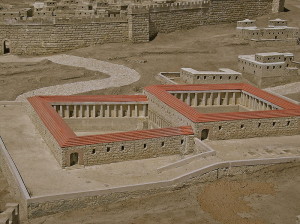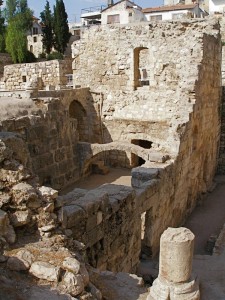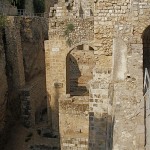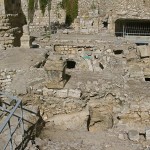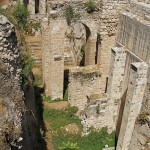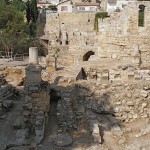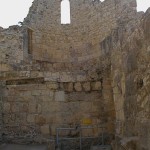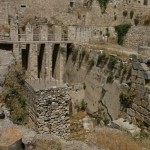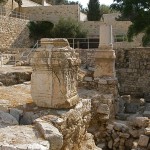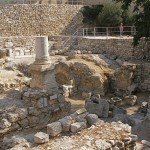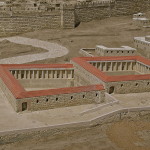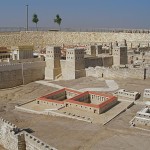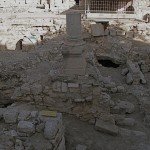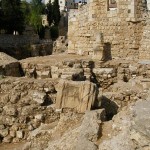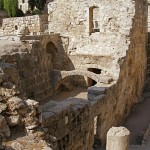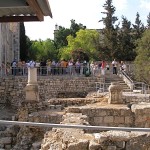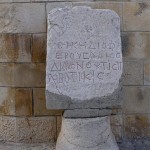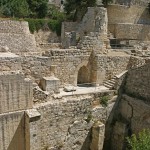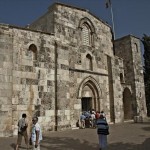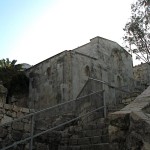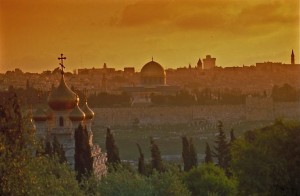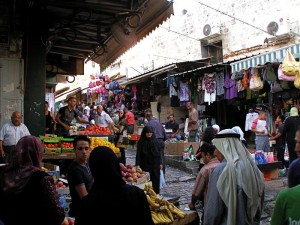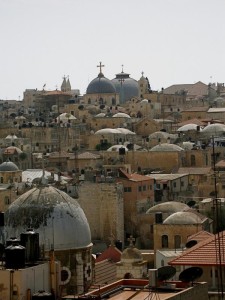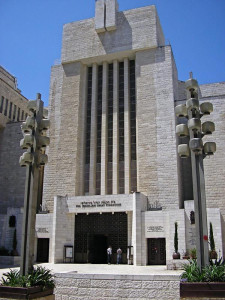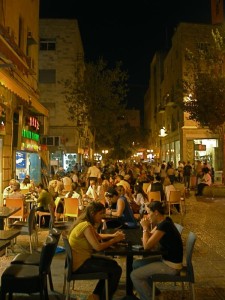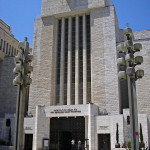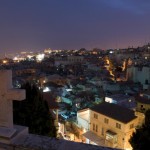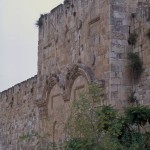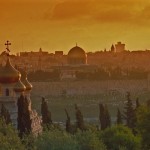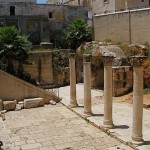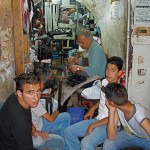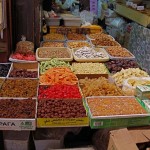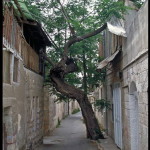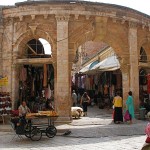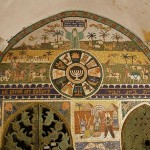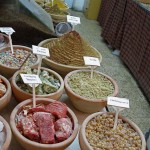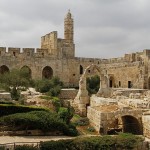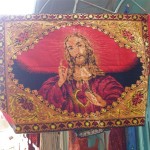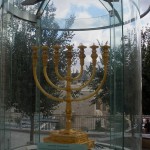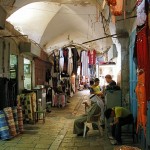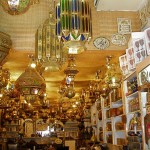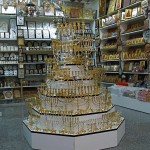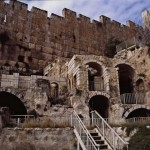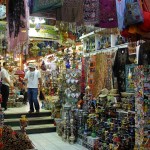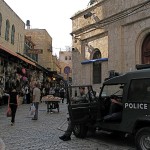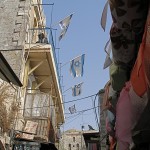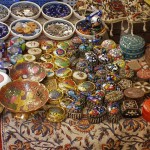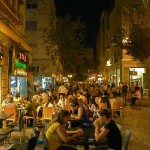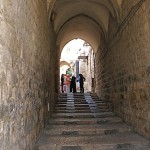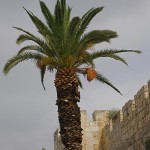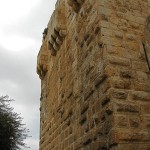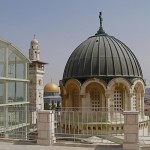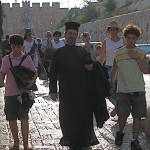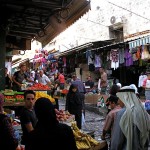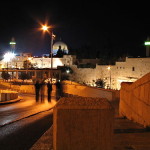Jerusalem
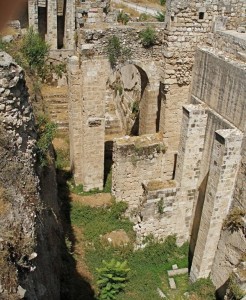
Bethesda pool, showing support structure that suspended the Byzantine basilica over the pools (Seetheholyland.net)
Archaeology has enabled a pool at Bethesda in Jerusalem to be identified as the scene of one of Jesus’ miracles. This was the healing of the paralysed man who had waited for 38 years for someone to help him into the pool “when the water is stirred” — an event believed to have curative powers.
The Gospel account says Jesus told the man, “Stand up, take your mat and walk”, and immediately he was made well (John 5:2-18).
The location of the Pools of Bethesda — actually a series of reservoirs and medicinal pools — is in the Muslim Quarter of Jerusalem’s Old City, north of the Temple Mount and about 50 metres inside St Stephen’s or Lions’ Gate. At that time, the gate was called the Sheep Gate, because this was where sheep were brought to the Temple for sacrifice.
According to an ancient tradition, Bethesda is also where Jesus’ maternal grandparents, Anne and Joachim, lived — and where his mother Mary was born. The Church of St Anne, built around 1140, stands nearby.
The compound containing the pools and the church is owned by the French government and administered by the White Fathers. It also contains a museum and a Greek-Catholic (Melkite) seminary.
Evidence of pagan healing sanctuary
In his Gospel account, John describes the pool as having five porticoes, in which lay many invalids — blind, lame and paralysed.
Because no such pool had been discovered, the historicity of the site was long called into question. Some claimed that John had invented the detail of the five porticoes to represent the five books of Moses, which Jesus had come to fulfil.
In the 1900s, however, archaeologists at Bethesda unearthed two large water reservoirs separated by a broad rock dike. They were rectangular in shape, with four colonnaded porticos around the sides and one across the central dike.
The purpose of the reservoirs was to collect rainwater, principally for Temple use.
Associated pools and baths at Bethesda (which means house of mercy) were apparently believed to have healing powers. Evidence of a pagan healing sanctuary has been found east of the pools, including marble representations of healed organs, such as feet and ears.
Early church was built over pool
The Byzantine empress Eudocia had an enormous basilica constructed over the Pools of Bethesda in the 5th century. The church was called “Mary where she was born”.
Its central aisle covered the central rock wall, the side aisles extended above the two basins and the front part covered the site of the ancient healing sanctuary.
The basilica was destroyed by the Persians in 614 and its masonry ended up in the pool.
The Crusaders built a small chapel, the Church of the Paralytic, over part of the ruined basilica. The façade, main entrance and apse of the Crusader chapel can be seen standing high over the pools, giving a clear example of the practice of building one church over another.
Related site:
In Scripture:
Jesus heals a sick man: John 5:2-18
Administered by: White Fathers
Tel.: 972-2-6283285
Open: 8am-noon, 2-6pm (5pm Oct-Mar)
- Stout pillars supported the Byzantine basilica over the Pools of Bethesda (Seetheholyland.net)
- Remains of a healing centre at Bethesda pools (Seetheholyland.net)
- Bethesda pool, showing support structure that suspended the Byzantine basilica over the pools (Seetheholyland.net)
- Ruins of the Byantine basilica with, at right, part of a wall of a Crusader chapel (Seetheholyland.net)
- Remains of Crusader chapel built over ruins of the Byzantine basilica at Bethesda (Seetheholyland.net)
- Bethesda pool, showing depth (© Tom Callinan / Seetheholyland.net)
- Column bases belonging to Byzantine basilica at Bethesda (Seetheholyland.net)
- Part of a healing centre at the Pools of Bethesda (Seetheholyland.net)
- Close-up of Pools of Bethesda in the Model of Ancient Jerusalem at the Israeli Museum (© Deror Avi)
- Pools of Bethesda in the Model of Ancient Jerusalem at Israel Museum (Seetheholyland.net)
- Remains of Asclepian temple of healing at Bethesda (Seetheholyland.net)
- Cross on column base from Byzantine basilica at Bethesda (Seetheholyland.net)
- Remains of a pagan temple, Byzantine basilica and Crusader chapel Bethesda (Seetheholyland.net)
- Visitors crowd viewing platform at Pools of Bethesda (Seetheholyland.net)
- Tombstone of a deacon attached to the Bethesda sanctuary (Seetheholyland.net)
- Remains of Byzantine basilica at Pools of Bethesda (© Tom Callinan / Seetheholyland.net)
- Church of St Anne (© Israel Ministry of Tourism)
- Church of St Anne from Pools of Bethesda (Seetheholyland.net)
References
Bouwen, Frans: “St Anne’s Church and the Pool of Bethesda”, Cornerstone, spring 2000.
Freeman-Grenville, G. S. P.: The Holy Land: A Pilgrim’s Guide to Israel, Jordan and the Sinai (Continuum Publishing, 1996)
Gonen, Rivka: Biblical Holy Places: An illustrated guide (Collier Macmillan, 1987)
Kilgallen, John J.: A New Testament Guide to the Holy Land (Loyola Press, 1998)
Mackowski, Richard M.: Jerusalem: City of Jesus (William B. Eerdmans, 1980)
Pixner, Bargil: With Jesus in Jerusalem – his First and Last Days in Judea (Corazin Publishing, 1996)
Wareham, Norman, and Gill, Jill: Every Pilgrim’s Guide to the Holy Land (Canterbury Press, 1996)
Starkey, Denis: “The White Fathers in Jerusalem”, White Fathers — White Sisters, April-May 1999.
External links

